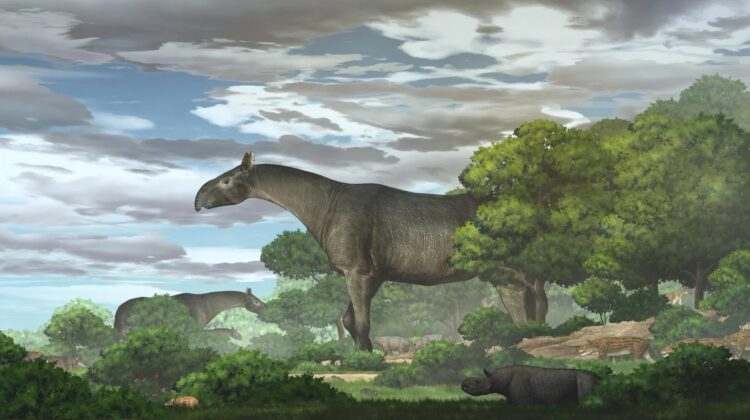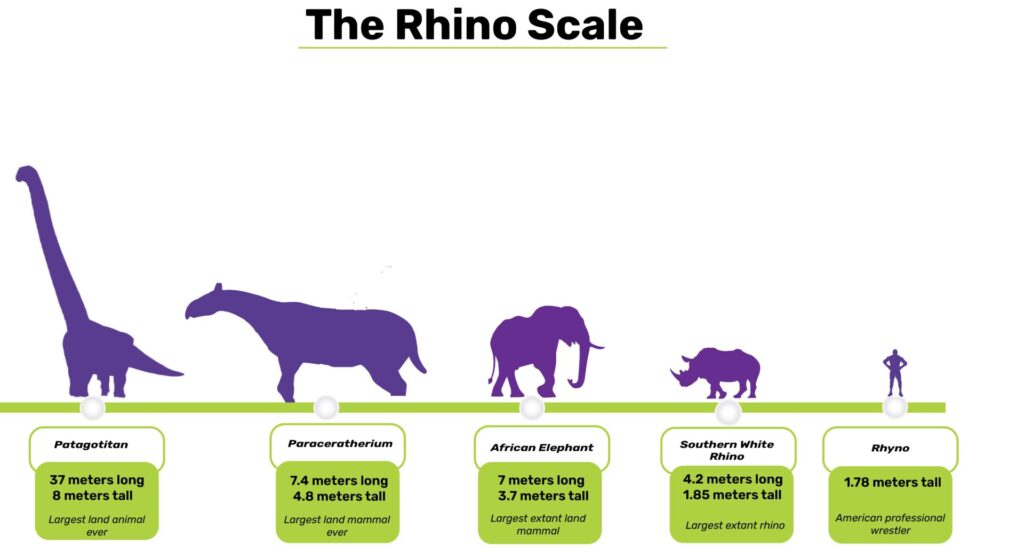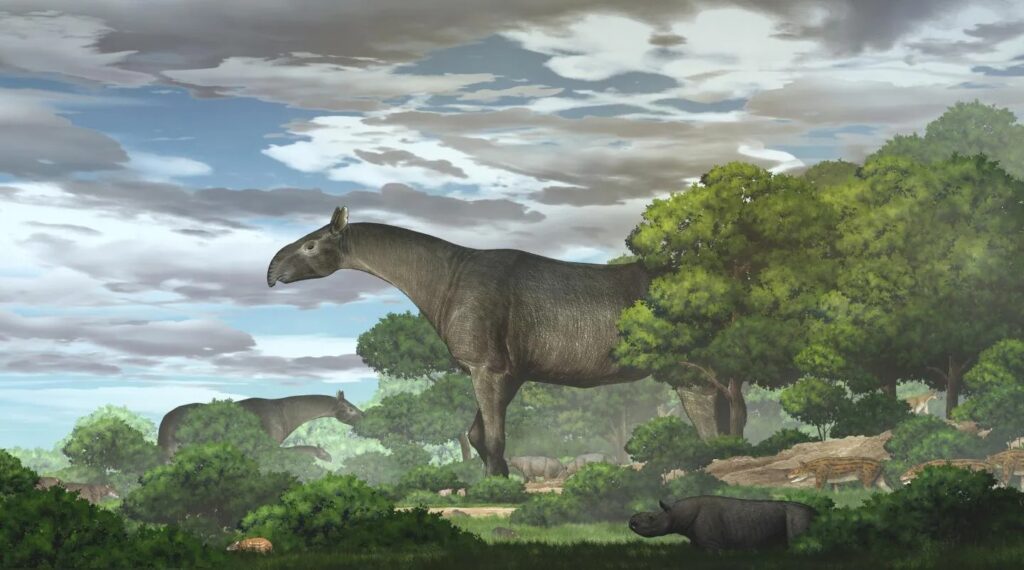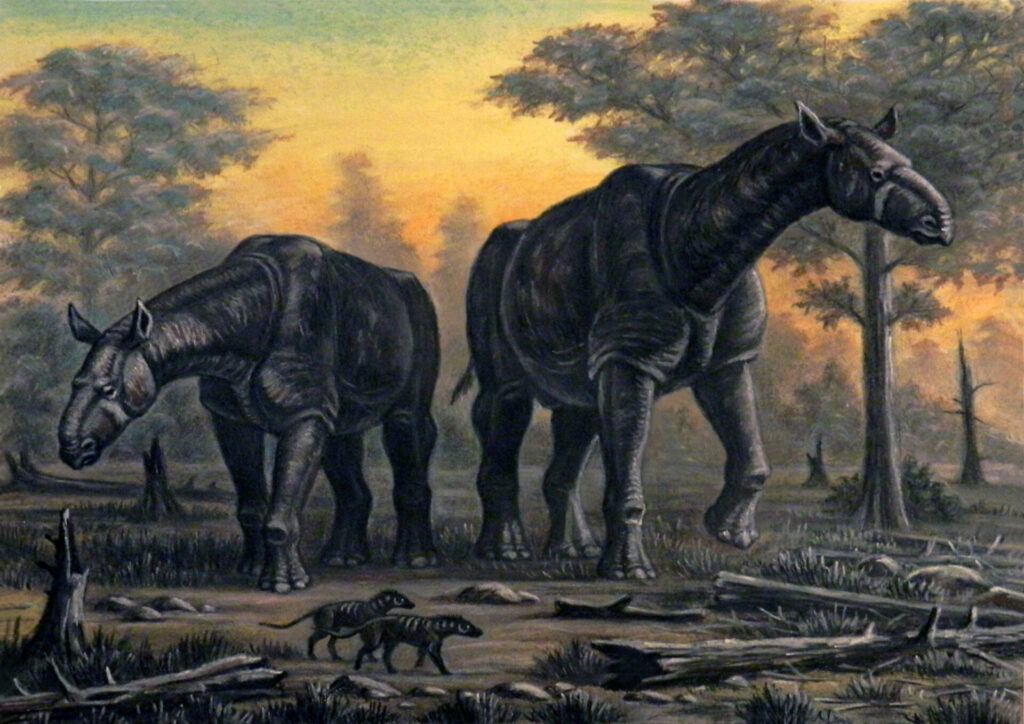
When we think of the largest animals to ever roam the Earth, our minds often drift to the colossal dinosaurs that once dominated the planet. But what about the mammals that came after? While the blue whale holds the title for the largest mammal (and animal) ever to exist, what about the giants that walked on land? Today, we dive into the fascinating world of prehistoric mammals and uncover the largest mammal ever to walk the Earth.
The African Elephant: Today’s Gentle Giant
Before we journey into the past, let’s start with the present. The African elephant is the largest living land mammal, towering at 3.7 meters (12 feet) tall and weighing between 4 to 7 tonnes. These majestic creatures are not only the heaviest land animals alive today but also boast the largest brains and longest noses of any terrestrial mammal.
However, as impressive as they are, African elephants are mere shadows of the true titans that once roamed the Earth.

Paraceratherium: The Colossal Hornless Rhino
The title of the largest land mammal ever goes to Paraceratherium, an ancient hornless rhino that lived during the Oligocene epoch, approximately 34–23 million years ago. This prehistoric giant was a true behemoth, with estimates suggesting it measured 7.4 meters (24 feet) in length and stood 4.8 meters (15.7 feet) tall at the shoulder.
Weighing in at a staggering 17 tonnes, Paraceratherium was nearly five times heavier than the largest rhinos alive today. Fossils of this ancient mammal have been discovered across Asia, including China, Mongolia, Kazakhstan, and Pakistan.
In 2021, a new species of Paraceratherium, named Paraceratherium linxiaense, was discovered in Tibet. The findings included a perfectly preserved skull over a meter long, providing scientists with invaluable insights into the anatomy and size of these ancient giants.
The Competition: Other Prehistoric Heavyweights

While Paraceratherium is widely regarded as the largest land mammal, it faces stiff competition from other extinct giants. For instance:
- Palaeoloxodon: This straight-tusked elephant, which lived around 700,000–50,000 years ago, is believed by some to have weighed up to 22 tonnes. However, due to incomplete fossil evidence, these estimates remain controversial.
- Borson’s Mastodon: Inhabiting Eurasia 5 to 2.5 million years ago, this ancient elephant relative is thought to have weighed between 15–16 tonnes, making it another contender for the title.
Despite these challengers, Paraceratherium remains the most widely accepted largest land mammal, thanks to its well-documented fossil record.
How Does Paraceratherium Compare to Other Giants?
To put things into perspective, let’s compare Paraceratherium to some of the largest animals ever:
- African Elephant: 7 meters long, 3.7 meters tall, 4–7 tonnes.
- Southern White Rhino: 4.2 meters long, 1.85 meters tall, 3.6 tonnes.
- Patagotitan mayorum (largest dinosaur): 37 meters long, weighing up to 70 tonnes.

Image credit: ABelov2014
While Paraceratherium was undoubtedly massive, it pales in comparison to the largest dinosaurs like Patagotitan. However, as a mammal, it remains an unparalleled giant in its own right.
Why Does This Matter?
Understanding the size and scale of ancient mammals like Paraceratherium not only satisfies our curiosity but also sheds light on the evolutionary history of life on Earth. These giants thrived in a world vastly different from ours, and their fossils provide crucial clues about the ecosystems they inhabited and the challenges they faced
The story of Paraceratherium and other ancient giants is a testament to the incredible diversity and scale of life that has existed on our planet. While the African elephant reigns supreme today, it’s humbling to imagine a time when even larger mammals roamed the Earth.
So, the next time you marvel at an elephant or rhino, remember that these modern-day giants are just a glimpse into a much larger, more extraordinary history.

Leave a Reply